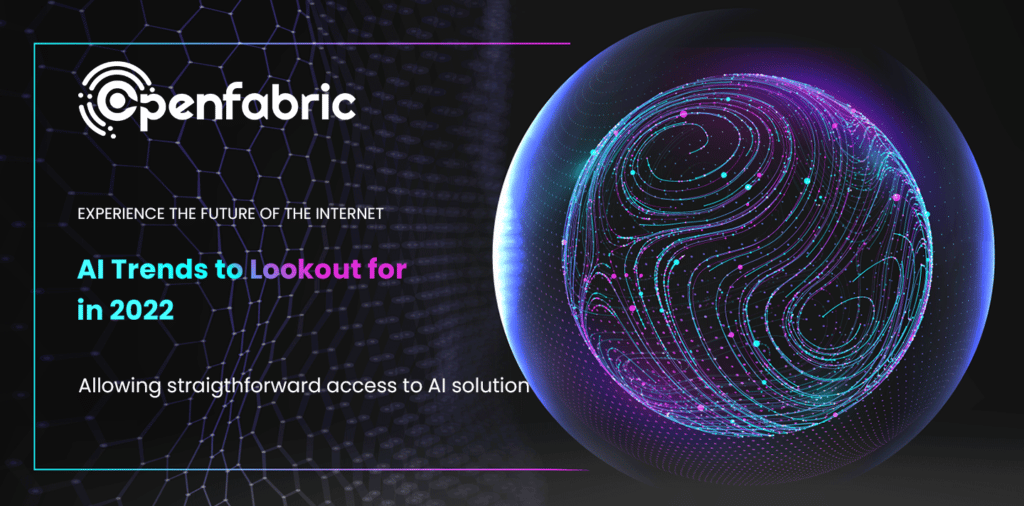
July 14, 2022 4 minutes read
AI Trends to Lookout for in 2022

Artificial Intelligence is continuing to grow and expand. Its importance is being felt more with every passing day and its use and application are being found in more fields and industries. Below we take a brief look at some of the AI trends that will be making headlines in the running year.
Large Language Models
Scaling up AI models has been one of the buzzwords in the AI industry. Researchers have been busy discussing and experimenting with what they term the ‘emergent abilities of large language models (LLMs)’. What this means is that there is a prevalent belief that scaling such language models has the potential to further expand and enhance the capabilities of the model. Big industry players like Google have been testing this thesis with LaMDA and PaLM. OpenAI is also in the race with its GPT-3. The three scaling factors being used are the number of computations (in FLOPs), training dataset size, and the number of parameters used by the model.
Ultimately the whole AI community will benefit as more abilities of the models are unlocked from these LLMs.
The Metaverse
The metaverse is not just the single universe that Facebook is pushing. There are a number of different metaverses, each with its own unique characteristics and numerous exciting projects are in the work. AI plays a foundational role in metaverse technology, from the creation of the universe to the components that exist within it and the user experience of its community. As the concept of metaverse starts to gain traction, the importance of AI in this domain will only increase.
No-code AI
A big barrier to entry into AI is in the form of a shortage of skilled AI engineers that can make use of the technology. Low-code and No-code solutions mitigate this barrier by introducing simple-to-use interfaces that do not require coding know-how. In terms of usability, these platforms aim to provide a similar experience to the drag-and-drop UI builders that have become a norm for frontend developers. Openfabric is a great example of such a platform that aims to democratize AI and empower the masses by bringing it in an easy-to-use manner.
AI regulations
Concerns regarding data regulation and privacy have led to the formulation of regulations like the GDPR (General Data Protection Regulation) in the EU. This has paved the way for similar regulations and laws in other countries. As AI continues to expand its reach, the need for AI regulations will be felt more. This will help avoid the misuse of AI and make it more focused on the well-being of the population at large.
Industry-Specific Applications
AI is becoming more precise and focused with time. Now, we are finally seeing the emergence of AI tools and applications that cater to the specific needs of a particular industry or niche instead of offering a one-size-fits-all approach. In the coming months and years, this trend will continue to increase because the practicality and effectiveness of industry-specific AI are unmatched in offering the best value to consumers.
AI and Cybersecurity
Cyber threats are deemed among the most significant threats to society. The World Economic Forum, in its Global Risks Report 2022, states that cyber threats pose more risk to society as compared to terrorism. As machines become a more vital part of our daily lives, this risk continues to rise and the solution to countering cyber threats lies with the adoption of AI. Intelligent tools can help analyze traffic, predict and identify potential threats and help us prevent major breaches and exploits. Thus, AI will continue to be a vital player in the cybersecurity domain in the coming times.
The Rise of Platforms
The true potential of the AI world will be unlocked with the help of platforms that will enable others to run AI applications. The AI industry is gradually moving to this cloud-first approach but building such platforms is a herculean task itself.
Openfabric is leading the move of AI platforms and has offered something totally unique in the industry. Acting as a tool for creators, it allows others to create interesting AI applications by using its platform. This is a true revolution in the field of AI and will certainly result in adding immense value to the industry.
Now, you can also easily jump on the AI bandwagon without having to learn any coding. To find out more about what Openfabric has to offer, simply visit us at the following socials:

